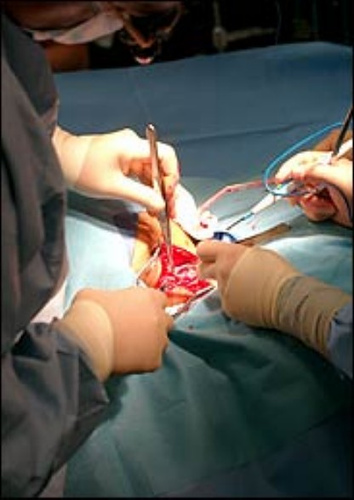
10 Mar How Surgical Intruments Get Left Inside Patients
According to the National Patient Safety Foundation, medical error is the ninth leading cause of death in the US. The estimated cost of these preventable errors is estimated at $17 billion per year. They believe the medical errors to have been errors on the part of attending doctors and nurses.
According to Resource 4 Surgical Accidents, instruments left in patients after emergency procedures have included tweezers, forceps, clamps, retractors, dilators, suction tubes, irrigation and injection needles, scopes and probes, ultrasound equipment and measurement devices. While medical staff notice obvious tools missing, such as scalpels and clamps, they fail sometimes to notice lesser tools and materials, such as tweezers, sutures, needles, and cotton swabs.
One complication to surgical procedures that patients face when accidents or mistakes occur and items are left inside the body is added procedures to remove the foreign objects. Other problems can be either sharp objects puncturing vital organs or blood vessels, leading to internal bleeding or softer materials such as gauze and sponges causing serious infections, especially when they are not removed immediately.
The New England Journal of Medicine reported surgical instruments get left behind in patients who have emergency procedures, and surgeries involving unforeseen changes and with those patients who have high body mass index or are overweight.
There is a newer system of prevention called Radio Frequency Identification that marks individual items so that after surgery is done and before a person is sewn up, the patient's body is scanned by an RFID reader to check for any RFID tagged items. This has proven both more time effective and efficient than counting and recounting items utilized during a given procedure.
However, patients have the power to make a huge difference in the quality of their care by actively participating in decisions made. Patients need to stay informed and involved in their health care by researching their ailments and make wise choices when selecting their caregivers. Research shows that patients participating more actively in making decisions about their health care have fewer problems.
Specific ways patients can get involved include:
- selecting caregivers they trust and who listen to them
- asking for clarification of anything they do not understand
- addressing safety by requesting the doctor mark the area to be operated on
- paying attention to whether or not they are getting the correct medications and treatment by appropriate medical professionals.
The Patient Bill of Rights at St Elizabeth's Hospital, explains how the Institute of Medicine is working on increased public awareness of medical errors and is urging patients to become informed about their healthcare and get more involved. If you, or someone you know, has been a victim of medical malpractice, call us today.









Sorry, the comment form is closed at this time.